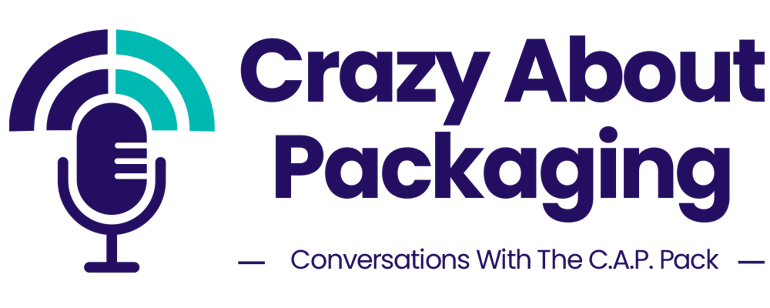
Welcome to another episode of the Crazy About Packaging podcast! Today, our hosts take us through the fascinating world of form fill and seal (FFS) packaging, including the mechanics, benefits, challenges, and future innovations of FFS.
Sneak Peek for Episode #18
Listen to the latest podcast to hear us discuss form fill seal packaging on Spotify or Apple, or watch on our website. Want a sneak peek? Read on to see some of the topics we cover.
What is Form Fill and Seal?
First thing’s first: what is form fill and seal and how does it work? This is a topic we talk about on our podcast frequently, but this is the first time we’ve broken it down into its basic process. So what happens on an FFS line?
- Roll stock material is fed into the line.
- The material is formed into a specific packaging shape.
- The packaging is filled with the food product or material.
- The filled packaging is sealed to protect the product.
Simple, right? Form, fill, seal, done. Of course, depending on your application, there may be additional steps or packaging requirements, but the basic process is as outlined above.
Benefits of Form Fill and Seal
One of the main advantages of FFS is its minimal labor requirements. FFS lines are designed to run high volumes with minimal downtime, making them ideal for products like creamers, yogurt cups, and even medical and personal care items.
In fact, FFS is only growing in popularity. According to a report gathered by Natalie, FFS is projected to be the fastest-growing packaging process through 2028. This growth is driven by the process's efficiency, versatility, and ability to maintain product sterility, which is crucial for food safety and quality.
Challenges in Form Fill and Seal
Despite its many benefits, FFS is not without challenges. The process involves multiple stages — sterilization, heating, forming, filling, sealing, and cutting — each of which must work seamlessly. If any stage fails, it can lead to significant downtime. Jonathan recalled an incident where traditional polypropylene, not designed for FFS, caught fire on the line, causing major disruptions.
Maintaining sterility is another critical challenge. The line must remain sterile. If a door is opened at the wrong time or the material gets caught, sterility is broken and a cleanup must follow. This can take upwards of eight hours — and if you’re spending time cleaning the line, you’re not using that time to package product, resulting in massive losses.
Material Considerations
Historically, polystyrene has been the material of choice for FFS due to its favorable properties, such as a wide process window and ease of handling. However, environmental concerns and regulations are pushing the industry to find alternatives. Finding a new material has not been easy for the industry as a whole. Traditional polypropylene doesn’t have the right material properties to go through an FFS line, while other materials may not meet recyclability or design requirements. PET in particular is recyclable, but not if it’s made opaque. The industry needs recyclable materials that don't compromise on performance.
The Promise of XPP
ICPG's XPP polypropylene is emerging as a promising solution. Designed to replicate the properties of polystyrene while being recyclable, XPP addresses both the performance and sustainability challenges of FFS. Jonathan described it as having "the stiffness, flex modulus, and clarity similar to polystyrene," making it a viable replacement that doesn't require extensive retooling of existing FFS lines.
Future Innovations and the Role of Sustainability
The future of FFS lies in balancing efficiency, performance, and sustainability. As regulations become stricter and consumers demand greener packaging, materials like XPP will play a crucial role. The C.A.P. Pack believes in the importance of continuous innovation to meet these evolving needs.
Talk to Us About Form Fill and Seal
The FFS process is a cornerstone of the packaging industry, offering unmatched efficiency and versatility. While challenges exist, particularly in material compatibility and maintaining sterility, innovations like XPP are paving the way for a more sustainable future. As the industry evolves, staying ahead of regulatory changes and consumer demands will be key.
Thank you for tuning into this episode of Crazy About Packaging. For more insights, follow us on social media and subscribe to our podcast. We look forward to bringing you more exciting discussions on packaging innovations.
For more information, visit our website. Join the conversation on LinkedIn and on Instagram and Twitter. You can also email us at ICPG@impactgroup.co. We love hearing from our audience and look forward to your feedback.



